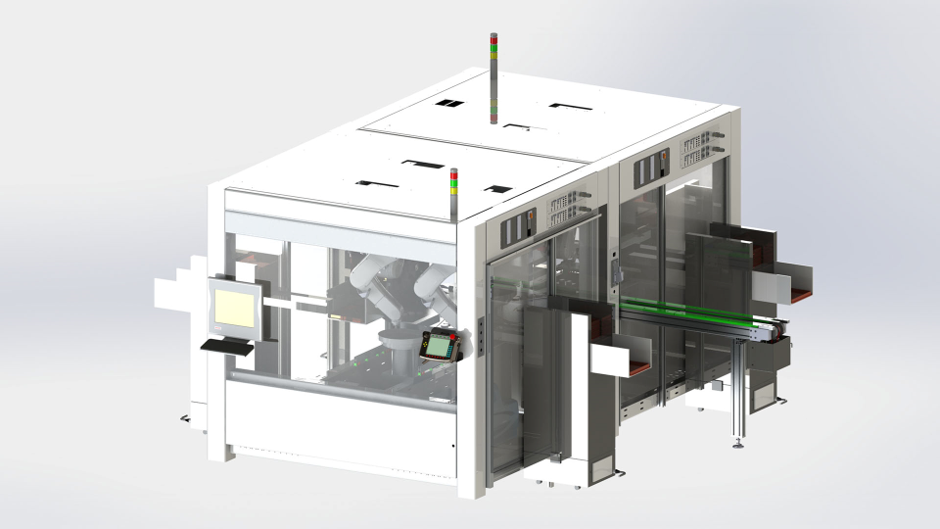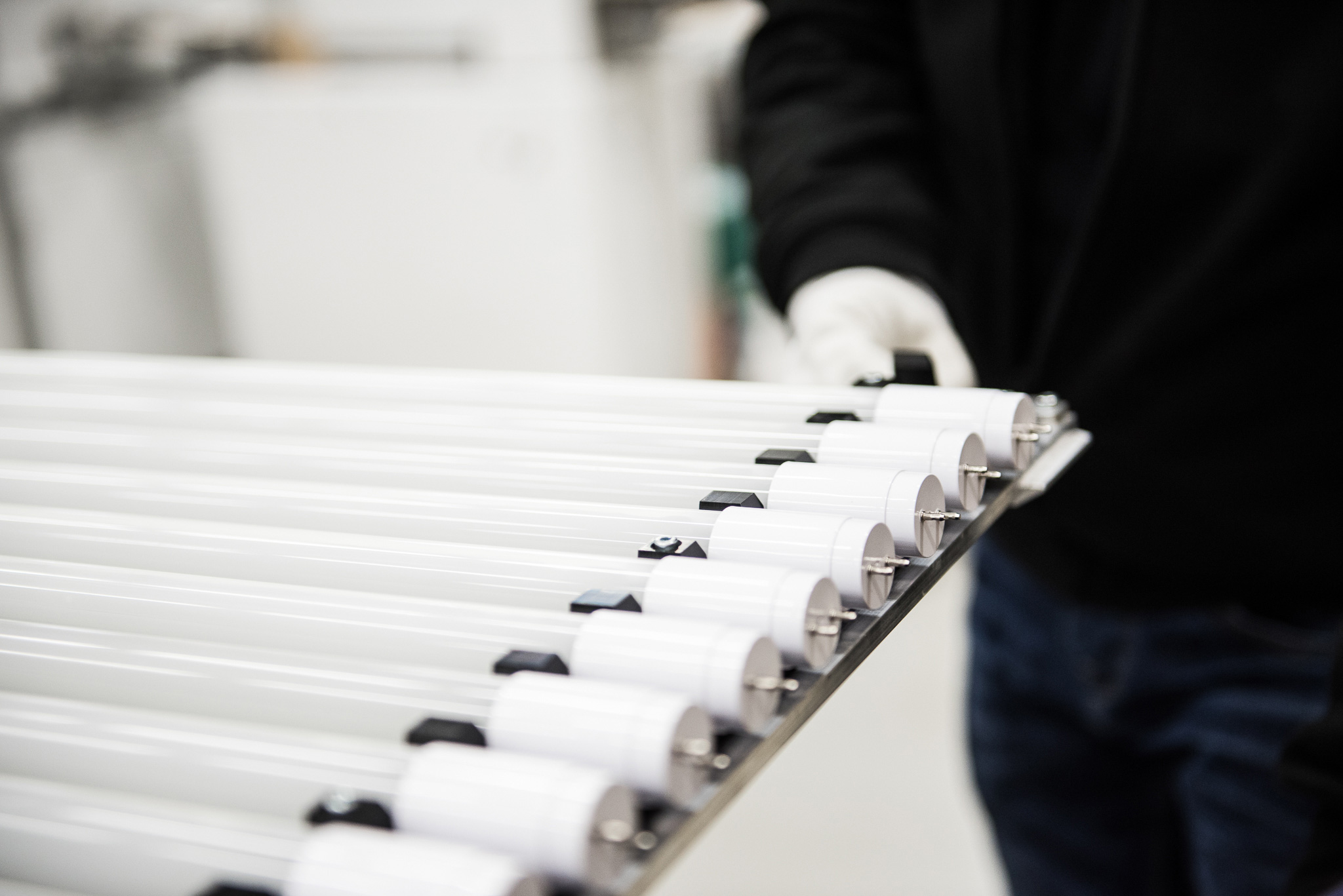A fully-automated microfactory, which scales to millions of units, can be installed quickly, even in one day, but requires three things: Process, Modularity, and Experience.
With a local microfactory, you can produce products efficiently without a complex offshored supply-chain. Automation enables you to reduce operational costs and increase quality and yield. Modularity allows producing a high product mix and scaling capacity to large volumes.
This blog explains how to install a fully-automated, modular microfactory locally in one day.
Download Guide – How to Build a Microfactory for Scalable Production
Introduction to Microfactories
The term microfactory can be understood in several ways. There is a strong misconception of microfactories considered as small job shops — sufficient for producing prototypes or samples but incapable of scaling production to industrial volumes.
However, many of the connotations tied to microfactories are out of date. Today, several manufacturers worldwide are operating agile microfactory units distributed locally, close to the markets. The highly-automated microfactories can produce high-mix products with high quality. Production capacity can be scaled easily depending on the demand. Microfactories require a smaller space and less operational staff and consume less energy. With local manufacturing based on a microfactory unit, you can avoid complex offshored supply-chains, reduce delays, freight, and inventory costs. The local microfactories can respond faster to market changes and earn you a more prominent socio-economical role as a manufacturer. In conclusion, local manufacturing enables smart reshoring and rightshoring strategies and increases ROI!
Microfactory Delivery Process
One of the key benefits of microfactory units is rapid deployment. Typically we can set up the entire system even in just one day at a customer’s premises. However, there is a thought-through, field-proven design, development, and testing process behind rapid deployment time.
At EID Robotics, we have developed an industrialized six-step microfactory delivery process. By following the same best-practice process every time, we can focus on analyzing the customer’s processes and requirements while designing and deploying a robust microfactory system on time, even in one day. Here’s how we do it.
Process analysis
The microfactory delivery begins from a process analysis. We analyze your manufacturing process and propose a best-practice automation solution for producing the products profitably and with the highest quality. We always concentrate on both products and processes, and our design for automation (DFA) work enables you to reduce costs.
Design
Designing automation requires two things. You must know the latest and greatest technologies and practices and have in-depth, hands-on industrial automation design experience. EID Robotics is renowned for its team of highly-skilled designers with a long experience in designing solutions for various sectors globally. Our goal is to find the best possible solutions for your needs and avoid compromises. We can help you to refine your production requirements, create new streamlined processes, or update your existing processes for manufacturing new products.
Assembly and Testing
The assembly and testing is the first moment-of-truth in our delivery process. At this step, we build the designed microfactory system entirely with automated machines. This pre-assembled system corresponds 100% to the final system to be delivered and assembled at your premises. All the machines are carefully tested before shipping, which takes place only after a full factory acceptance test (FAT), and upon your approval.
Installation and Ramp-up
After delivery, the EID Robotics field deployment team installs and ramps up the microfactory system at your premises. Thanks to our thoroughly planned design and development process and modularized solution, the on-site installation and ramp-up time at your premises can be as short as one day.
Training
Upon completed installation and ramp-up, your staff is trained for operating and maintaining the microfactory solution. With the help of detailed instructions and a user-friendly graphical user interface, starting the production is simple.
Maintenance
Our microfactory delivery process doesn’t stop, although you have started production. Our team remains at your reach throughout the life-cycle and takes care of all things automation, enabling you to concentrate on developing your products and business. Our maintenance services include a full-time warranty, scheduled services, spare parts, 24/7 remote support, and on-site support on a needs basis.
Modular Microfactory
Modularity is one of the critical advantages of microfactories. It means that the automated production system is built up from standardized modules, each of which has a specific function. Modular microfactory systems are easier to design, and you will have fewer compatibility issues if standardized interfaces are used. Modularity enables faster deployment, too.
Throughout the several years of the life-cycle of the microfactory, modularity provides you with more freedom in running a higher mix of products. A modular microfactory also adapts to production changes flexibly and allows you to scale production capacity by easily adding more modules.
Microfactory Modules

EID Robotics’ ANT Plant microfactory is a fully modular system. It provides several standardized production modules, each with a 50 square-feet of surface area. There are ready-to-test modules for several production functions – these include assembly, testing, material handling, packaging, and palletizing. So, regardless of your particular requirements, there are tested building blocks readily available, which are combined, and integrated to create a fully-automized production system for your needs.
Operating Interface

ANT Plant provides you with an easy-to-use interface for operating and maintaining all the modules as a single system – via one communication network and secure external connection point for remote control and data collection.
Customizable Production Applications
Each ANT Plant module can be equipped with various applications, such as robot applications, machine vision devices, laser marking equipment, manipulators, sticker feeders, heat staking, hot bar soldering, ultrasonic welding, screwing, dispensing of glues and similar masses, flexible feeders, conveyors and conveyor tracking appliances.
Microfactory Examples
As with anything in manufacturing, the technology and process can get you only halfway. But you need in-depth experience in designing and building microfactory systems to succeed. EID Robotics has delivered several successful microfactory systems based on the ANT Plant solution. Here are two examples.
Microfactory for Sensor Production – One Module
Senseair is a leading global provider of air and gas sensing technology. EID Robotics provided Senseair with ANT Plant microfactory solution for manufacturing new types of NDIR sensors for automotive, fully automatically. The comprehensive turnkey solution consisting of one microfactory module included the assembly process, quality verification system, and packing process. With the ANT Plant microfactory, Senseair only needs one employee per shift to ensure that production runs smoothly. This minimizes operational costs significantly.
Microfactory for LED Tube Production – 6 Modules

EID Robotics built a local fully automated microfactory for a Finnish manufacturer of high-quality LED lighting solutions, Valtavalo. The site was built out of six modules occupying only 160 m2 of floor space. The ANT Plant microfactory system includes several standardized production modules, each with 3.5 m2 of surface area. The line includes modules for loading, assembly, aging, testing and laser marking, and packaging.
Conclusions
Microfactories are a cost-efficient way for ramping up local manufacturing fast. And, once you are up to speed, a modular microfactory is flexible enough to allow you to change and scale your production quickly. However, getting it right the first time requires a field-proven process, modular technology, and in-depth experience. This is precisely what we at EID Robotics do – Modular ANT Plant microfactory solutions deployed in one day!
Download Guide – How to Build a Microfactory for Scalable Production
Contact us, and let’s get started!


